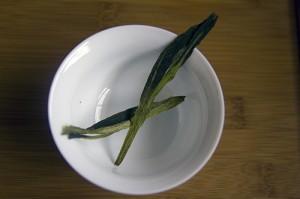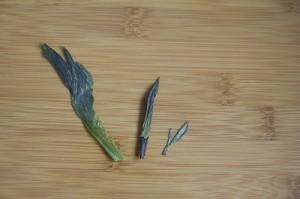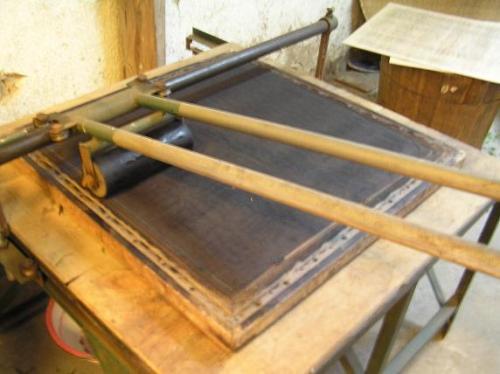As far as varieties of teas go, many of them have their own distinct characteristics in terms of taste. But Taiping Houkui is one that  stands out in its name (see here for the story) as well as its physical appearance.
stands out in its name (see here for the story) as well as its physical appearance.
How many other varieties of teas have leaves that are too big to fit into a gaiwan?
The reason for its size goes beyond a single explanation and has to be broken down into 3 factors:
i) Picking Requirement
ii) Cultivar
iii) Production Technique
Picking Requirement
Why the highest quality green tea grown in Jiangnan area is billed as MingQian or Pre-Qing Ming teas is due to its tenderness.
Hence Taiping Houkui runs contrary to convention in that the best Taiping Houkui are not made from young shoots (buds or buds to 1 leaf)- instead they are made from fairly matured leaves with 1 bud to 2 leaves.

From Left to Right- Taiping Houkui, Liuan Guapian and Dafo Longjing
However that doesn’t explain the full picture though.
Liuan Guapian is also made from matured leaves- 1 bud to 2-3 leaves- but as shown in the photo, it is still dwarfed by Taiping Houkui in terms of size.
Cultivar
Cultivar means “cultivated variety”, not the most accurate description but its commonly used in describing this “sub-species” of the Camellia sinensis plant. (More on cultivar in this article)
The cultivar used for Taiping Houkui is the Shi Da Cha (柿大茶) cultivar, a cultivar that is naturally found in (see what I mean about cultivar not being the best description but it’s the convention) in Hou Keng village, near Huangshan, where Taiping Houkui is grown.
In fact, the Shi Da Cha is so named due to its size which resembles persimmons (translation for 柿). For extra emphasis- 大 is translated as “big”. So when a cultivar is named “Big Persimmon”, it gives you a clue on its size.
A grown leaf can measure about 13-14cm in length and 5 cm in width.
As a comparison, most of the green teas in the Jiangnan area (including Longjing, Biluochun and Huangshan Maofeng) measure around 5-6 cm in length at the same age.
As if the 2 factors above do not suffice, there is one more.
Production Technique

In the production of Taiping Houkui, the leaves are pan-fired in a wok to kill the enzymes that causes oxidation in a process known as “shaqing”. This is similar to Longjing where the leaves are flattened on the wok.
While Longjing continues to be shaped and flattened further on the wok, in the production of Taiping Houkui, the leaves are further flattened with this roller before being baked in a charcoal oven.
In some ‘factories’, the leaves are flattened lightly by a piece of wood that being used to smoothen it. This step is not merely for aesthetical purposes though; it helps extract the juices, leaving it on the surface of the tea. This ensures the flavors are released more easily during infusions.
A Final Note on Taiping Houkui
Don’t dismiss this as a tea that is only unique in appearance.
The Shi Da Cha cultivar has approximately 7% amino acid component. This is 2-3 times more than most types of cultivars and lends itself to that salutary refreshing brisk taste.
Just make sure you have a tall glass or a big mug to brew this huge leaf.
See other articles related to different varieties of green tea here
